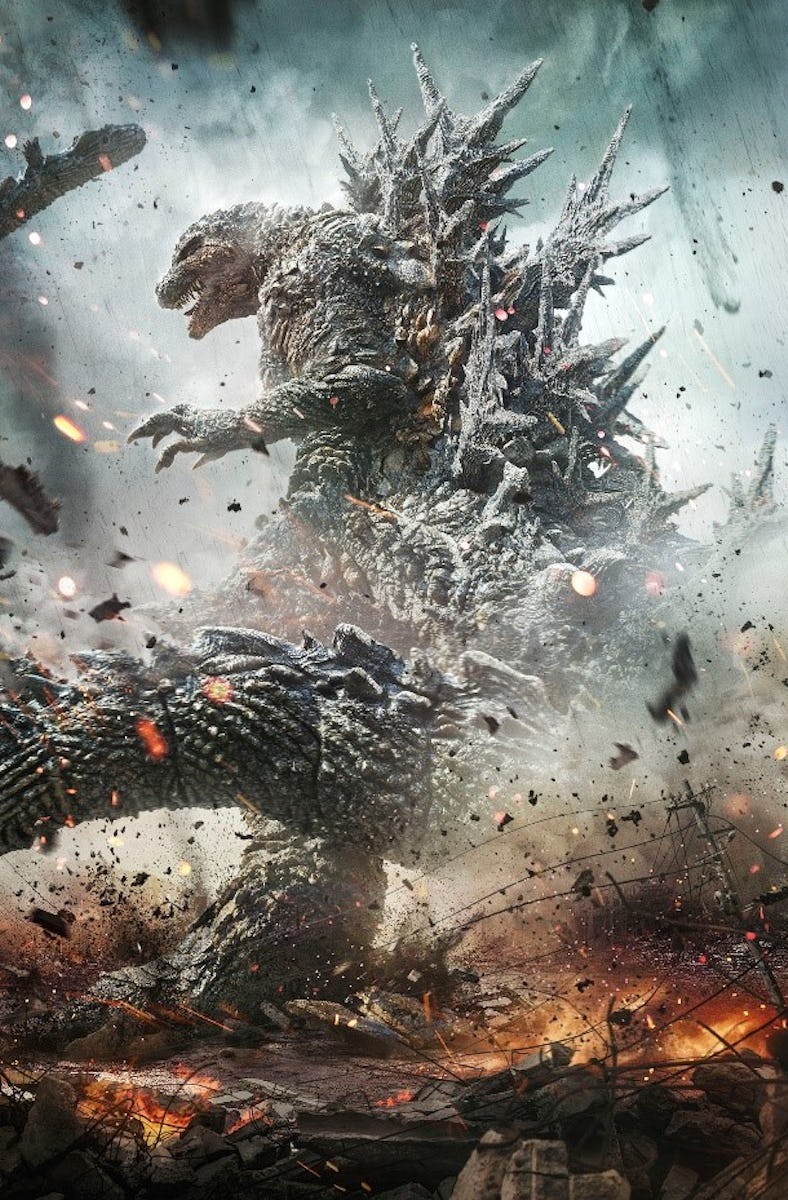Godzilla Minus One Might Be the Best Kaiju Movie Since the Original Godzilla
It’s almost like director Takashi Yamazaki was born to make this movie.

Deep in the recesses of our subconscious is an encounter with something so hostile and unnatural it hard-wired us to feel fear and act in the interest of survival. When fear faces us, we might choose to flee or freeze. In Godzilla Minus One, we see people learning how to stand up and look fear in the eye.
Seven years after Toho rebooted its prized Godzilla franchise with the politically minded Shin Godzilla, the historic Japanese studio has again reimagined the atomic lizard synonymous with the kaiju genre in director Takashi Yamazaki’s Godzilla Minus One. Set during Japan’s postwar recovery in the late 1940s, the “Minus One” in the title refers to Japan starting from zero — only for Godzilla’s emergence to plunge the battered nation further into a deficit of despair.
Yamazaki’s latest movie is as dark as that sounds, but it’s also a stunning portrait of bravery and resilience against overwhelming odds. It suggests that puny people can be as strong as a monster when we fight together for the right reasons, and it does so while being so many things at once: an emotionally charged family drama, a war epic, a Jaws homage, and a gruesome monster horror. Regardless of what shape Minus One takes over its runtime, it remains a well-directed feature about giving oneself permission to keep on living at any cost.
When protagonist and kamikaze pilot Koichi Shikishima (Ryunosuke Kamiki) enters the movie, Yamazaki’s camera is fixated on the undetonated bomb beneath his plane. It’s a stark reminder of Godzilla’s creative origins rooted in the atomic decimation of Hiroshima and Nagasaki. It also doubles as a symbol of the movie’s narrative thrust. Shikishima is a kamikaze pilot who didn’t do the senseless and costly he was meant to do. (For those in need of context, kamikaze bombers who survived or narrowly escaped their duty endured public shame.) Shikishima’s own shame is amplified tenfold when he meets Godzilla on an island in a rousing opening set-piece where his fingers tremble on a trigger he never pulls.
The rest of the movie follows Shikishima building a new life literally atop the rubble of Japan after World War II. In a ramshackle makeshift home, Shikishima enters a platonic relationship with another survivor (Minami Hamabe) as they watch over a baby orphan in a subplot that is amusing until it becomes genuinely moving. Inevitably, Godzilla returns, now bigger and more dangerous from exposure to U.S. nuclear tests in Bikini Atoll. With Japan left defenseless, Shikishima finds himself in the company of war veterans who take it upon themselves to stop the monster from obliterating them all.
Yamazaki’s Godzilla is fully a VFX creature with a thunderous sound design whose roars chill the spine and footsteps feel like cannon blasts.
Director Takashi Yamazaki is a darling in Japan’s movie industry, a veteran of VFX-heavy productions who understands how to prioritize the most essential and emotionally relatable parts of his films. His filmography speaks to an artist born to direct a Godzilla movie, too. His 2007 dramedy Always: Sunset on Third Street 2 opens with a Godzilla cameo played to comic effect. With Godzilla Minus One, Yamazaki demonstrates a more understated but no less effective sense of humor, but never betrays his intended somber tone.
Yamazaki is quite unlike many other spectacle-oriented directors for whom maximalism is the point. Whether it's giant spaceship battles or just his actors weeping on hospital beds, his staging is clear and compositions consistent. This is especially true here, with Godzilla’s unholy massacre of bustling Ginza technically sound with a coherent sense of space.
That Yamazaki also knows how to really sell the beast’s imposing stature aids in our recognition of Godzilla as a foreign entity. Though kaiju films are ubiquitous and their potency diluted by superhero climaxes, Yamazaki’s overall grasp on Godzilla Minus One restores the eerie foreignness of a nuclear-powered dinosaur crushing buildings in broad daylight. Yamazaki’s Godzilla is fully a VFX creature with a thunderous sound design whose roars chill the spine and footsteps feel like cannon blasts. The director re-cements Godzilla’s Lovecraftian nature as an indescribable monstrosity whose presence can drive witnesses to insanity. During the movie’s staple city stomp, a long stretch of haunting visual poetry, a news crew standing close by on a rooftop have their eyes and lenses fixated on Godzilla. His tail swipes the foundation of the building from under their feet and we follow them all the way to the ground. The effect is almost enough to induce vertigo.
Godzilla’s unholy massacre of bustling Ginza is technically sound with a coherent sense of space.
It is not hyperbole to say Godzilla Minus One is perhaps one of the finest movies of the kaiju genre ever put to screen since Ishiro Honda’s Gojira kicked off the franchise in 1954. It’s as bleak and zealous against the inhuman cost of war as Honda’s movie but brims with verve over its affirmations of life as a gift to share with others. Drop any and all notions that kaiju films are empty-calorie disaster porn. In contrast to Toho’s own camp sequels or the gaudy, Americanized MonsterVerse, Godzilla Minus One is beautiful in its mindfulness and honesty. It is a picture full of awful destruction yet cherishes the value of a single life by the totality of its complexities.
This article was originally published on